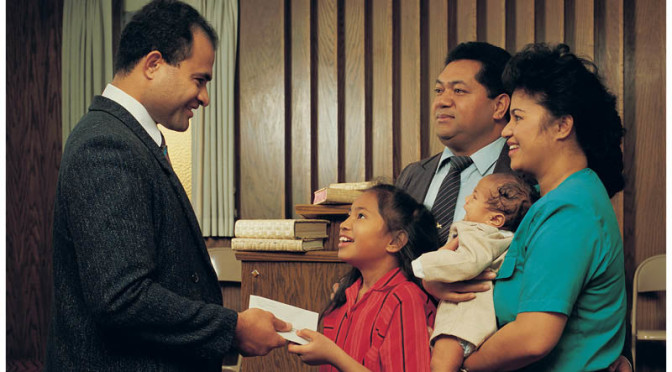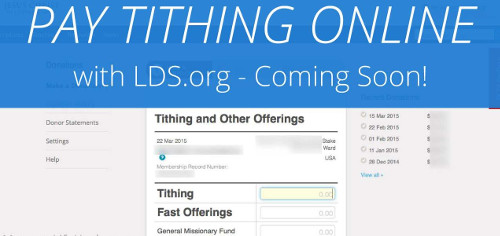“If a destitute family is faced with the decision of paying their tithing or eating, they should pay their tithing.” – Elder Lynn Robbins
“To those of you who pay your tithing, I commend you. To those of you who presently are not obeying the law of tithing, I invite you to consider your ways and repent.” – Elder David Bendar
The LDS Church is, again, investing in commercial development. Rather than using their vast holding to help the poor, the needy, the sick, or even their own financially struggling members, they are, instead, helping to build a new stadium in SLC.
One argument often made by LDS apologists is that donated tithing is not used for these commercial ventures. Instead, The Church uses investment income from their commercial enterprises (one might ask why these exist) to re-invest in the new project. I’ve written of this before, with regards to City Creek and The Deseret Ranches, What came to mind today was the following analogy. I give you:
Gospel Profits
Tommy: Hey, Gordie, can you give me some money? I really need some money to fix my bike.
Gordie: No problem, brother. How much do you need?
Tommy: Well, I’m not sure exactly, but if you could spare like, maybe 10% of what’s in your wallet, that might cover it.
Gordie: That seems a weird way to ask for it. But, since you’re my brother, and I love you, OK. Here’s $10.
Tommy: . . . . Are you sure that’s 10%?
Gordie: Sure. I’ve got $110, so I gave you $10.
Tommy: Well, but technically, 10% of $110 is $11.
Gordie: . . . .
Tommy: . . . . Don’t you want to help me? If you help me, I’ll help you.
Grodie: . . . . Fine. Here’s another $1.
Tommy: Thank you! Thank you!
<Several Weeks Later>
Gordie: Hey, Tommy! Looks like you got your bike all fixed up!
Tommy: Sure did! Also got these awesome stickers to make it go faster! And some sweet new biking gloves!
Gordie: Um. Where’d you get the money for stickers and gloves?
Tommy: Oh, well, so, before I got my bike fixed, I took the money you gave me and I bought some candy bars. Then I sold the candy bars door to door, and made $15! Then I used that $15 and bought more candy bars, and made $25! At the end of two weeks, I had $130! So, then I used $80 to fix my bike and used the rest to buy the stickers and gloves!
Gordie: But, I gave you that money to fix your bike.
Tommy: I know! Thank you SO much!
Gordie: But you had money left over? Shouldn’t you have paid me back with the excess, or at least saved the money so that you didn’t need to ask for money next time?
Tommy: HAHAHAHAHAHAHAHA!
Gordie: Well, could you at least help me mow the…
Tommy: HAHAHAHAHAHAHAHA! <rides away>
Lay not up for yourselves treasures upon earth, where moth and rust doth corrupt, and where thieves break through and steal: But lay up for yourselves treasures in heaven, where neither moth nor rust doth corrupt, and where thieves do not break through nor steal: For where your treasure is, there will your heart be also. No man can serve two masters: for either he will hate the one, and love the other; or else he will hold to the one, and despise the other. Ye cannot serve God and Mammon. – Matthew 6:19–21,24

